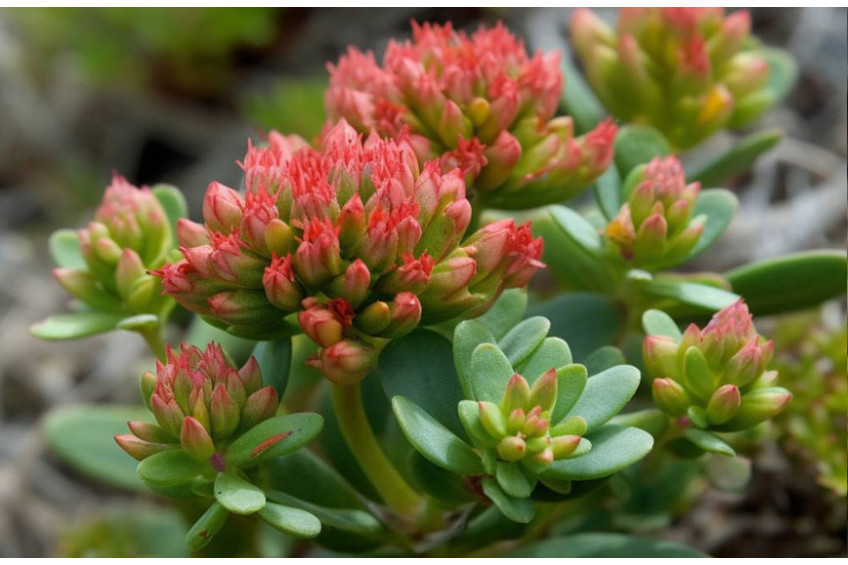
RHODIOLA ROSEA - ALL WE NOW ABOUT IT
RHODIOLA ROSEA
Rhodiola rosea (golden root, pink root) (lat. Rhodiola rósea) is a perennial herbaceous plant; species of the genus Rhodiola of the Crassulaceae family. The name “golden root” was given to the plant by the rhizome, which has the color of bronze or old gilding with mother-of-pearl sheen, and smells like a rose when cut.
Distribution and habitat
It grows in regions with a cold and temperate climate, including North America, Great Britain and Ireland, in alpine mountain meadows (in the Alps, Pyrenees, Carpathians) and in the Pamirs. In Russia - in Altai, the Urals, in the polar regions of Yakutia, in the mountainous regions of Eastern Siberia, Western Siberia and the Far East, on the coast of the White and Barents Seas.
Botanical information
Rhodiola rosea is a perennial succulent dioecious herbaceous plant with a powerful horizontal rhizome and thin adventitious roots. Usually, Rhodiola has several erect, non-branched stems (up to 10-15 pieces), about 10-40 cm high, plants with one stem are less common. Leaves are sessile, alternate, oblong-ovate, elliptical or pointed, entire or serrate-toothed in the upper part. Inflorescence is corymbose, many-flowered, yellow flowers are unisexual, four-, rarely five-membered. The fruits are erect greenish multi-leaflets. Flowering time is June-July, fruit ripening occurs in July-August. Reproduction is vegetative and by seeds. The plant is undemanding to heat and light, but demanding to moisture and needs abundant flowing moisture.
Chemical Composition
Scientists have found about 140 components in the underground part of Rhodiola rosea.
Rhodiola root rhizomes contain:
- phenols and their derivatives (in%): tyrosol - 0.25, salidroside - 0.51-1.39;
- aromatic compounds: rosavin - 1-2.5%, cinnamon alcohol, rosin, rosarin;
- carbohydrates: glucose and fructose - 2.31, sucrose - 0.53, sedoheptulose;
- organic acids (oxalic, malic, succinic, citric) - 0.15;
- terpenoids (rosiridin, rosiridol);
- essential oil - 0.8-0.9 (about 86 components were found in its composition, including cinnamaldehyde, citral, phenylethyl alcohol, 3-phenylethyl acetate, geraniol, geranyl acetate, etc.);
- steroids: p-sitosterol;
- phenolcarboxylic acids and their derivatives (gallic, methyl ester of gallic acid);
- tannins - 15.9-20.25;
- flavonoids (kaempferol, astragalin, kaempferol 7-rhamnoside, tricine, tricine 5-glucoside and 7-glucoside, rhodionin, rhodiosin, rhodiolin, acetylrodalgin, 8-methylherbacetin;
- anthraquinones;
- alkaloids.
Microelements that were also found (content in ash in%): manganese - up to 0.8, silver - 0.0002, zinc - 0.1, copper - 0.002, etc.
Essential oil is composed of the main classes of chemicals: monoterpene hydrocarbons (25.40%), monoterpene alcohols (23.61%) and straight chain aliphatic alcohols (37.54%).
The chemical composition of the essential oil from the rhizomes of Rhodiola rosea grown in different countries varies. Thus, the main component of the essential oil of Rhodiola grown in Bulgaria is geraniol and myrtenol, in China - geraniol and octanol, and in India - phenylethyl alcohol. Cinnamon alcohol was found only in a sample from Bulgaria. Rhodiola rosea grown abroad contains several times less essential oil than golden root from Russia.
Organic acids (oxalic, malic, citric, succinic), phenols and their derivatives (salidroside), phenolcarboxylic acids (gallic, coffee), coumarins, tannins, flavonoids (rhodionin, rodionidin, rhodalin, rhodiolgin, rhodiolhydin) were found in the aerial part.
Rhodiola stems contain gossipetin, rhodiolflavonoside, gallic acid, trans-p-hydroxycinnamic acid, p-tyrosol.
Pharmacological properties
An alcohol-based or alcohol-free extracts of rhodiola is used in scientific medicine as a stimulant of the central nervous system, in asthenic and neurasthenic conditions, increased fatigue, decreased performance, in psychiatry, in functional diseases of the nervous system, in the rehabilitation period after somatic and infectious diseases, as well as in practically healthy people with reduced performance.
Experiments have shown that salidroside is a protective agent of human erythrocytes from oxidative stress and can be a good adaptogen to increase the body's resistance to stress and fatigue. Salidroside prevents the loss of hematopoietic stem cells (HSCs) under conditions of oxidative stress. During experiments on mice salidroside shows hypoglycemic activity, neuroprotective action. Salidroside has an antiviral effect against the coxsackie B3 virus. Salidroside, rosavin and rosarin have a stimulating effect on the central nervous system.
Gossipetin and rhodiolflavonoside from Rhodiola rosea have shown antibacterial effects against Staphylococcus aureus. The root extract, salidroside and rosavin show antimicrobial activity against the gonorrhea bacillus Neisseria gonorrhoeae.
Hydroalcoholic extract of rhodiola has a positive effect in reducing addiction to narcotic drugs and reduces the body's vulnerability to repeated use, can be a very effective natural remedy for the treatment of some drug addiction. Rhodiola rosea extract has shown positive activity in the treatment of smoking addiction. Rhodiola extract and salidroside has shown a therapeutic anti-stress effect when overeating.
Rhodiola rosea extract and salidroside demonstrated a neuroprotective effect. Taking rhodiola extract reduces the overall level of anxiety. Rhodiola rosea has a rejuvenating effect on Drosophila, slowing down the aging of insects, and its extract and salidroside inhibit the growth of human bladder "wrong" cells: https://pubmed.ncbi.nlm.nih.gov/21520297/ (Liu et al., 2012).
Rhodiola rosea root extract has an anti-inflammatory effect. (Pooja et al., 2009). Rhodiola rosea extract, as well as tyrosol, salidroside, rosavin, exhibit a pronounced adaptogenic, anti-alterative effect and increase the resistance of tissues of various organs to damage. Rhodiola preparations have an adaptogenic effect, also providing neuroprotective, cardioprotective, antidepressant, neuroleptic, nootropic effects, they increase life expectancy and stimulate the activity of the central nervous system.
A number of clinical studies show that repeated administration of Rhodiola rosea preparations is effective against fatigue, it increases mental activity (in particular, the ability to concentrate in healthy people), and reduces anxiety (fear) with fatigue syndrome. Good results have been obtained with the use of Rhodiola in patients with mild to moderate depression and general anxiety. A single dose of Rhodiola extract has a strong, dose-independent, adaptogenic and anti-stress, neuroleptic, and also a stimulating effect in acute stress, and taking the extract for 6 weeks containing 3% rosavin and 1% salidroside is also effective in chronic stress.
Rhodiola preparations have antitoxic (to poisonous compounds), antihypnotic and antinarcotic effects, prevent the development of experimental leukocytosis, hyper- and hypoglycemia, and increase the resistance of animals to infection. Rhodiola extract, due to a combination of psychostimulating and adaptogenic properties, is a valuable remedy for practically healthy people with a tendency to asthenia (weakness) during work that requires increased mental stress. Asthenization was manifested in a decrease in working capacity, difficulty falling asleep at night and some drowsiness during the day, poor appetite, irritability and headaches.
Rhodiola is very effective in asthenic conditions after somatic and infectious diseases, when taking the golden root, mental fatigue decreases, lethargy and daytime sleepiness disappear (without subsequent disruption of night sleep), a feeling of weakness in the morning, mental and physical performance improves, attention is better concentrated, decreases or the headache disappears.
Thus, Rhodiola preparations are indicated as a stimulant for overworked, practically healthy people and patients with asthenic conditions after somatic or infectious diseases; with functional diseases of the nervous system - various forms of neurosis (hyposthenic stage of neurasthenia, psychasthenia), vegetative-vascular dystonia, hypotension, sexual disorders in men such as impotence.
The extract from the roots and rhizomes of Rhodiola has a pronounced stimulating property, significantly increases the amount of dynamic and static work. The increase in working capacity is especially noticeable when using Rhodiola preparations against the background of fatigue and when performing heavy physical work. At the same time, Rhodiola normalizes metabolic processes, contributes to the economic expenditure of energy resources and their rapid resynthesis, improves energy metabolism in muscles and the brain due to the earlier use of not only carbohydrates, but also fats as oxidation substrates.
Like ginseng preparations, Rhodiola rosea extract has adaptogenic properties, and also prevents the development of hyper- and hypoglycemia, leukocytosis and leukopenia in rabbits. Rhodiola extract in the experiment has an antitumor and anti-metastasis effect, enhances the effect of other cytostatics, reduces the level of hyper- and hypoglycemia, and activates the function of the thyroid gland. Also, the use of extract and tincture of Rhodiola rosea increase the body's resistance to infections, X-ray and ionizing radiation, toxic chemicals (gasoline, acetone, ethyl alcohol, chlorophos, medicines, etc.).
In the experiment, oral administration of 1 ml/kg of Rhodiola extract to rats for 8 days increased their production of β-endorphin by 4 times. An increase in endorphin production can be considered as one of the mechanisms of the stress-protective action.
In clinical practice, there is a confirmation that Rhodiola rosea is especially useful for women with symptoms of "foggy mind" during and after menopause. At this stage, a woman faces several stressors at once: work pressure, family responsibilities, aging parents and numerous health problems for a woman and her loved ones. Stressors tend to increase at a time in life when a woman's energy levels naturally decline. Rhodiola is not a panacea, but it can significantly help, because it increases energy levels, improves concentration and mood.
Male menopause can begin as early as 35 years of age. The average age of onset of andropause is 44 years. It can manifest as hormonal, physical, psychological, interpersonal, sexual, social and spiritual changes. Rhodiola rosea can increase stamina, performance, confidence and athletic performance. Studies on an adaptive formula containing Rhodiola Rosea, Schisandra chinensis and Spiny Eleutherococcus have shown significant improvements in physical endurance and performance.
Rhodiola improves mental focus, and therefore may be helpful for some people with attention deficit disorder with or without hyperactivity (ADHD). Rhodiola is suitable for patients with mild ADHD or intolerance to prescription stimulants. Adding rhodiola to the diet can also be helpful for those who take prescription stimulants but cannot take enough of them to completely relieve symptoms.
The rhizomes and roots of Rhodiola rosea (lat. Rhizoma et radix Rhodiolae roseae) are used as medicinal raw materials. Raw materials are harvested from the end of flowering until the fruits are fully ripe: they are dug up, cleaned from the ground, washed with water, freed from rotten parts and cut into pieces. Dry in dryers at 50-60°C. Shelf life of raw materials is 3 years.
It is valued as a medicinal plant, an adaptogen, not much inferior to ginseng. In medicine, both above-ground and underground parts are used. Decoctions and lotions are prepared from the aerial parts, which are used in the treatment of trachoma. In addition, rhizomes are used in the treatment of cardiovascular, gastrointestinal, skin diseases, pulmonary tuberculosis, bone fractures and many other diseases, as an antipyretic, tonic.
Externally used in the form of lotions or ointments for the treatment of wounds, conjunctivitis, skin rashes, abscesses. The juice of the rhizomes is used for jaundice and as a wound cleanser.
Rhodiola rosea is widely used in folk medicine for the treatment of altitude sickness and oxygen starvation. The underground part is used in Tibetan medicine for cardiovascular and gastrointestinal diseases. In folk medicine, a decoction, tincture of rhizomes is used for metro- and menorrhagia, diarrhea, fevers, headaches, scurvy, to relieve fatigue and increase efficiency, for respiratory infections, as a diuretic, for gout, diabetes mellitus, for anemia, pulmonary tuberculosis, diseases liver, toothache, diseases of the stomach, malaria, nervous diseases, impotence, loss of strength, overwork, and as a tonic and tonic.
Outwardly (poultices, lotions from the rhizomes of Rhodiola, its infusion and decoction) are used for conjunctivitis, abscesses, skin rashes; for lubricating the gums - with pyorrhea. The juice was used as a wound cleanser; drank it with jaundice, to exacerbate hearing.
In Mongolian folk medicine, rhodiola is used for bone fractures, various wounds, pulmonary tuberculosis, skin diseases, as an antipyretic and general tonic. Arat cattle breeders boil Rhodiola rhizomes in water or broth and give them to emaciated and exhausted animals.
In Altai, Rhodiola rosea is used for nervous and gastric diseases, as a tonic, for tension, diabetes, scrofula, heavy uterine bleeding, and as an anti-febrile agent.
An extract from the roots and rhizomes of Rhodiola is used in scientific medicine for neurosis, hypotension, schizophrenia, physical and mental overwork, vegetovascular dystonia, and asthenic conditions after various diseases. Rhodiola preparations increase mental performance, improve memory, increase the body's resistance to adverse effects.
Rhodiola rosea has a positive effect on the functions of the gonads and genital organs, respectively, it can be recommended in the treatment of oligospermia, impotence, late puberty, primary and secondary amenorrhea, dysmenorrhea, adnexitis, early menopause, fibrocystic mastopathy, polycystic ovaries. Rhodiola preparations accelerate the processes of reparation (healing) of wounds, injuries, bone fractures, and therefore are recommended for use in the pre- and postoperative period. A decoction and lotions from the aerial part are used in folk medicine for trachoma.
Rhodiola rosea is best absorbed when taken on an empty stomach, so it should be taken at least 20-30 minutes before breakfast or lunch. Rhodiola rosea has an invigorating effect and can therefore disturb sleep if taken in the afternoon or evening.
Side Effects and Precautions
In general, Rhodiola rosea is considered safe and has relatively few side effects. However, some people may be sensitive to stimulant effects. In such people, the reaction to taking Rhodiola may manifest itself in the form of anxiety, irritability, or insomnia. Some people have vivid dreams during the first two weeks, but this does not apply to unpleasant phenomena.
People who are sensitive to stimulants, as well as the elderly and debilitated, should start taking Rhodiola at lower doses and gradually increase the dose. When taken simultaneously with caffeine or stimulant drugs, Rhodiola may increase their effect.
People with bipolar disorder should only take Rhodiola under the supervision of a physician, as the stimulant effects of Rhodiola may exacerbate agitation and irritability.
At higher doses (more than 450 mg per day), rhodiola may slightly affect platelets, which are responsible for blood clotting. Excessive bleeding has not been reported with Rhodiola. However, if a person is taking medications that also reduce blood clotting, this can make bruising and bleeding worse. It is recommended to stop taking Rhodiola rosea 10 days before major surgery.
Although Rhodiola rosea is generally good for the heart, in people with arrhythmia or tachycardia (rapid heartbeat), the stimulant effects of the plant may exacerbate the symptoms of the underlying disease.
Today, due to the growing demand for adaptogens, wild Rhodiola rosea is a protected species. The plant began to be actively cultivated in Scandinavia and Eastern Europe. Although the cultivated plant is not as effective as wild Rhodiola rosea, the extract from a properly grown plant can be used to produce effective nutritional supplements, as Hawaii Pharm does.


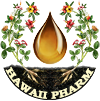



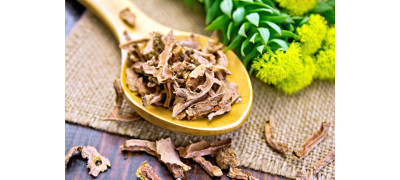
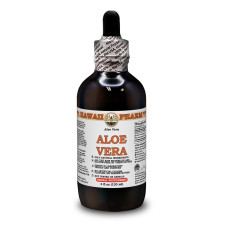
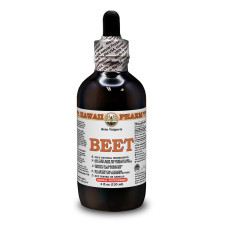
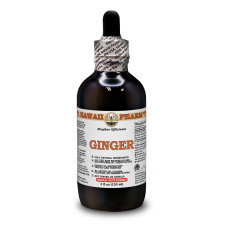
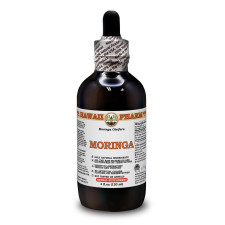
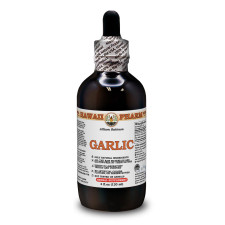
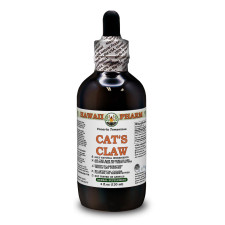
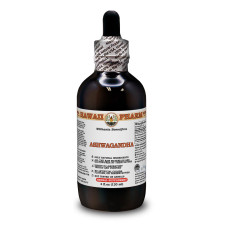
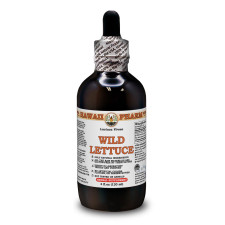
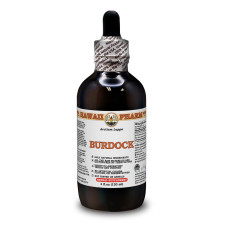
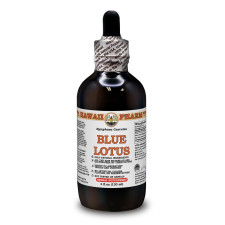



 We use cookies and similar technologies that are necessary to operate the website.
You can consent to our use of cookies by clicking "Accept..."
We use cookies and similar technologies that are necessary to operate the website.
You can consent to our use of cookies by clicking "Accept..."


